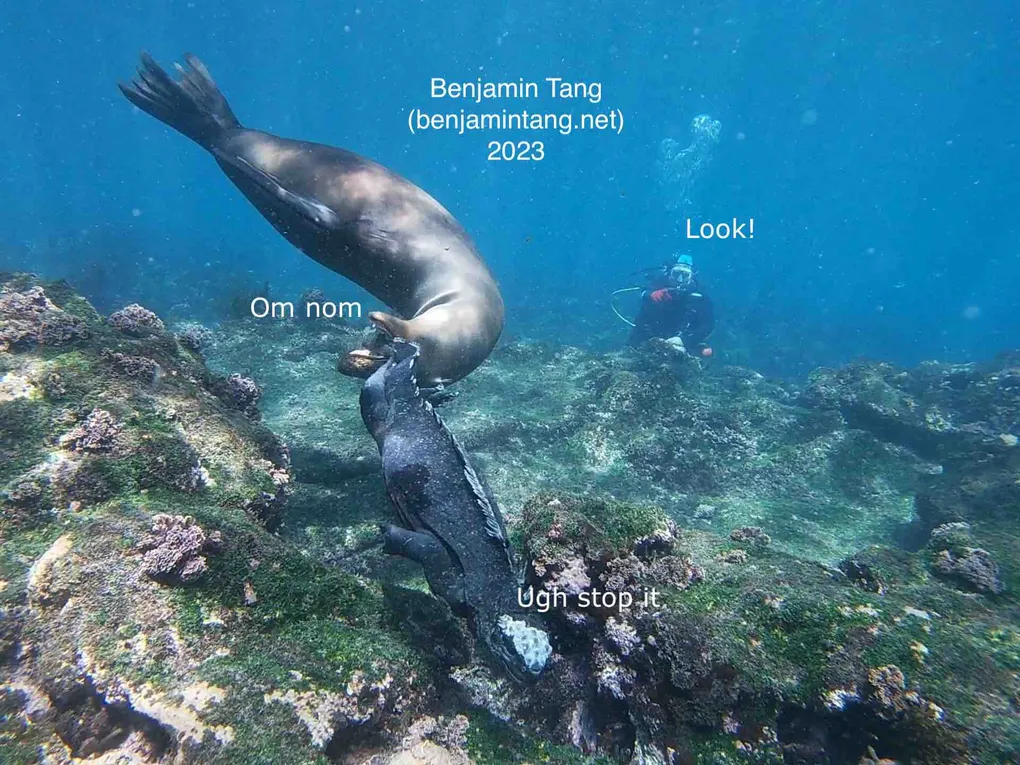
Galapagos Liveaboard
Galapagos is simultaneously on the equator (with the boosted biodiversity you usually get with tropical climates) and has upwellings of cold water dragging up nutrients to the surface. That and the isolation makes the endemic species unique. There aren’t many places like this (Palau is another rare example).
Regarding scuba diving, the behaviour of the marine animals is different from other places, best described as indifferent. Whenever you encounter something big in South East Asia, they usually vanish quickly as humans are scary and probably dangerous (which in some ways we are). Here animals come closer to you, letting you take a very close look.
Each island in the Galapagos has its own biome, and the main airport is Baltra. Pay the permit fee, grab a bus, then a ferry (its all well organized, and you can’t deviate) then try to find someone to split a taxi with to go the main Puerto Ayora town. Its here that the Liveaboards depart from. If you have a day or to to spare, visit the nearby beaches.
Most longer liveaboard itineraries travel to the remote Wolf and Darwin islands up north, and depending on how much time you have, will add on a visit to another remote place. In my case, the west coast of the big Isabella island.
First day we headed back up north again to the airport island, where I saw my first hammerhead. Ironically this probably ended up being my best view of a singular hammerhead, as I will describe later. Sadly I was too busy fiddling around with my drysuit (which was unnecessary as Galapagos was very warm this year) to film it, but I did get this eagle ray instead.
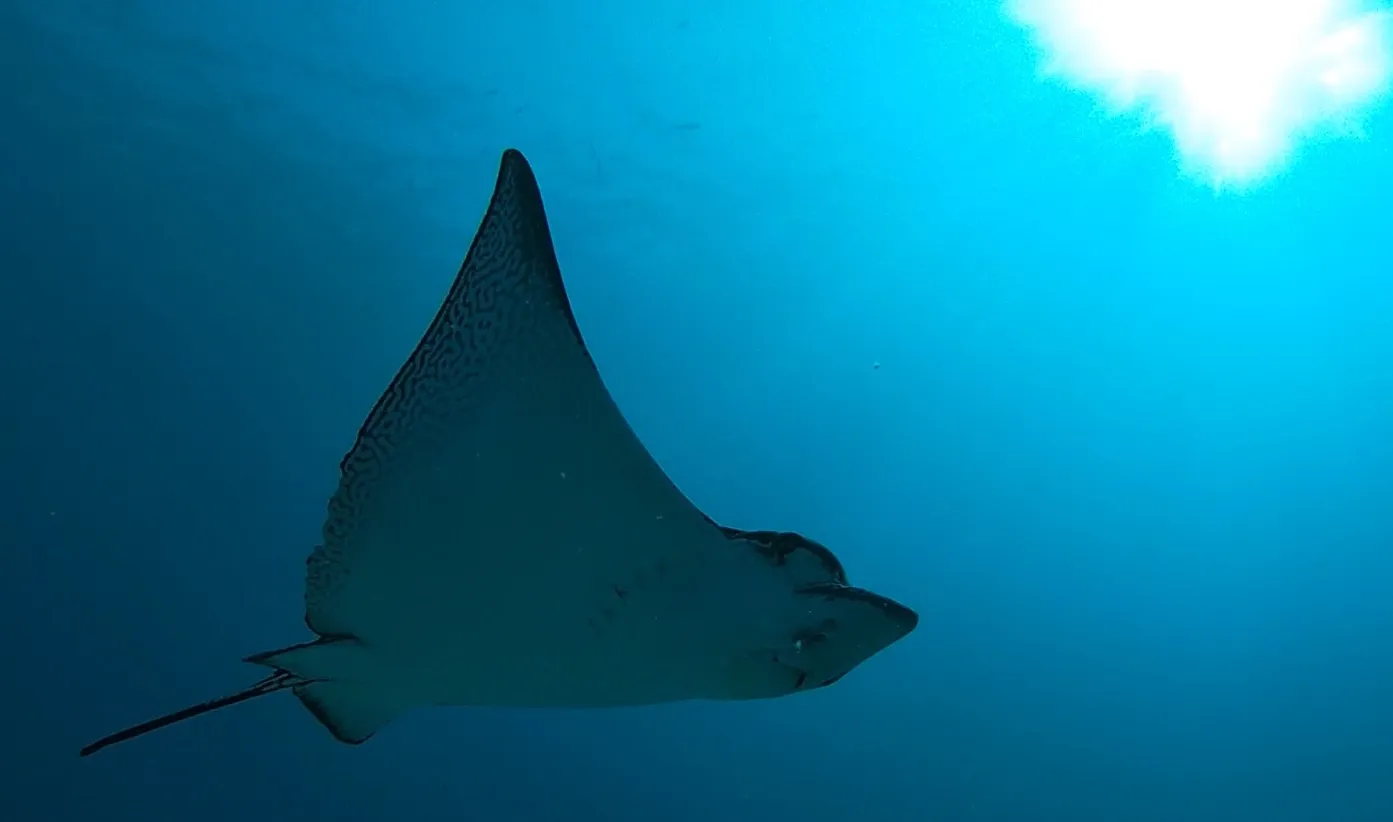
The next day, we headed straight to Wolf island (travelling overnight, so we had already arrived by the time we woke up). This was our first day of truly intense diving with 4 dives planned for today. As my diving career progressed, I usually just do 2 a day, so to go to 4 took some adjustment.
It’s also today that we saw the famous Hammerhead schools the area is famous for. However visibility is slightly poor, so although its easy to make out the shapes of the schools of sharks, it was hard to get a good view of them. Occasionally a single shark will wander closer to us, but they almost certainly detected us before we spotted them, so they usually moved away from us quickly. Better than the Red Sea, however, where I never saw them up close.
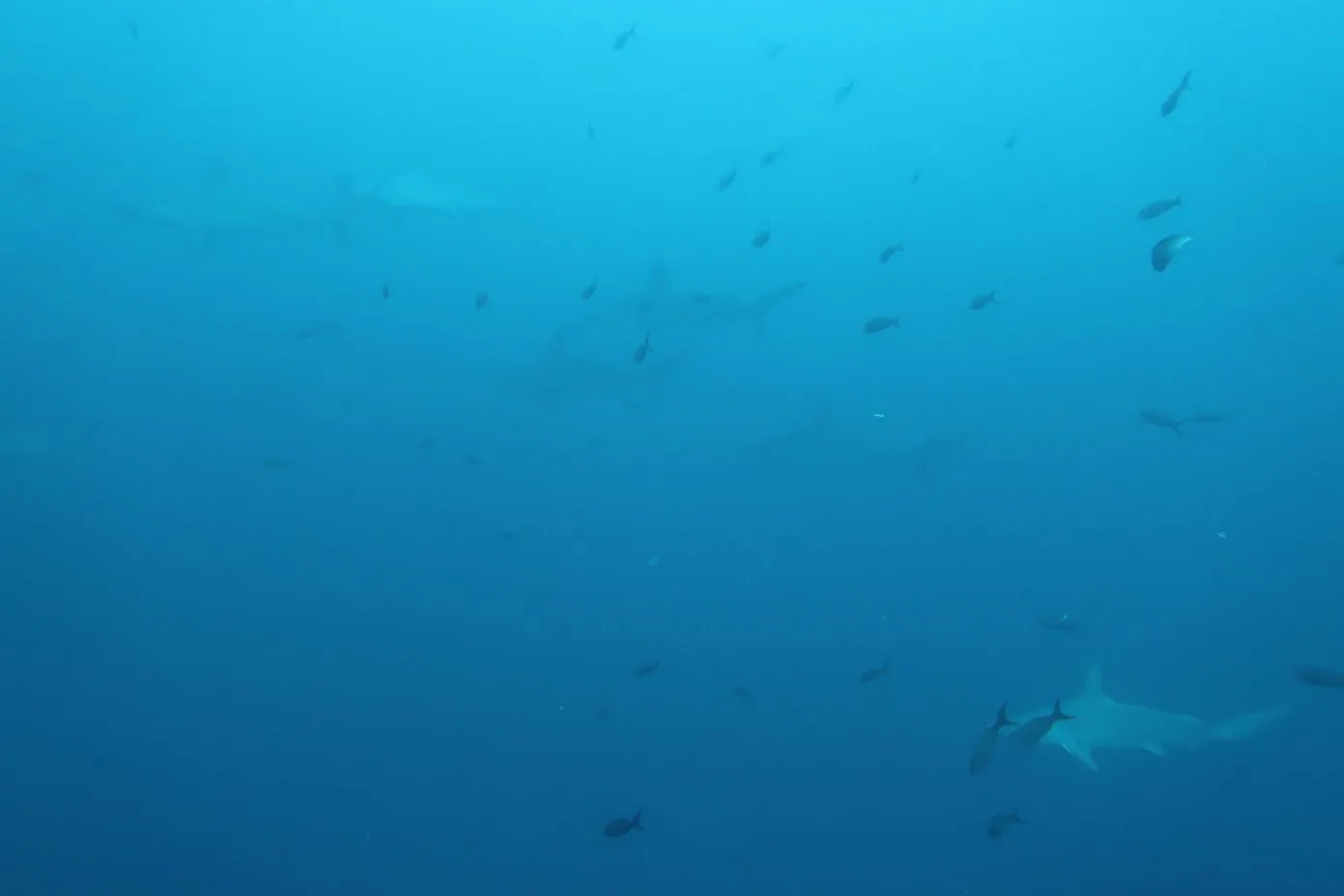
For the 3rd day, we headed up to Darwin island, which as the northernmost and most remote island in the Galapagos archipelagos, was the highlight of the trip. We didn’t just see 1, but 3 whale sharks. 2 underwater, and 1 quite remarkably came up to and alongside the dive boat, presumably attracted by the fish underneath the dive boat. I’ve seen a whale shark once before in Indonesia, but 3 in one day is truly exceptional, and possibly the highlight of the trip.
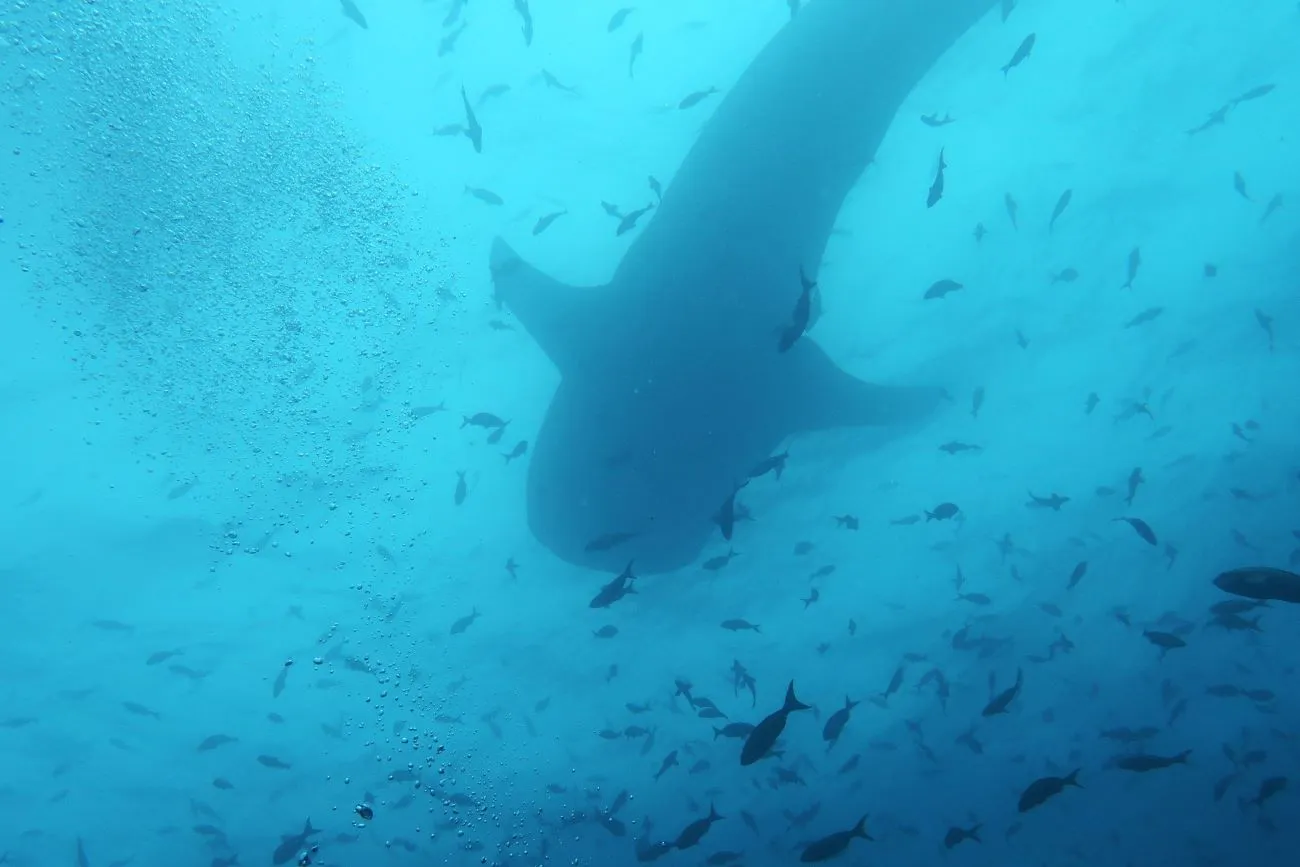
We also visited the rock formations that made up the Darwin arch (that had recently collapsed, so now a pair of pillars). Sealions rest on the rocks here, including this pup.
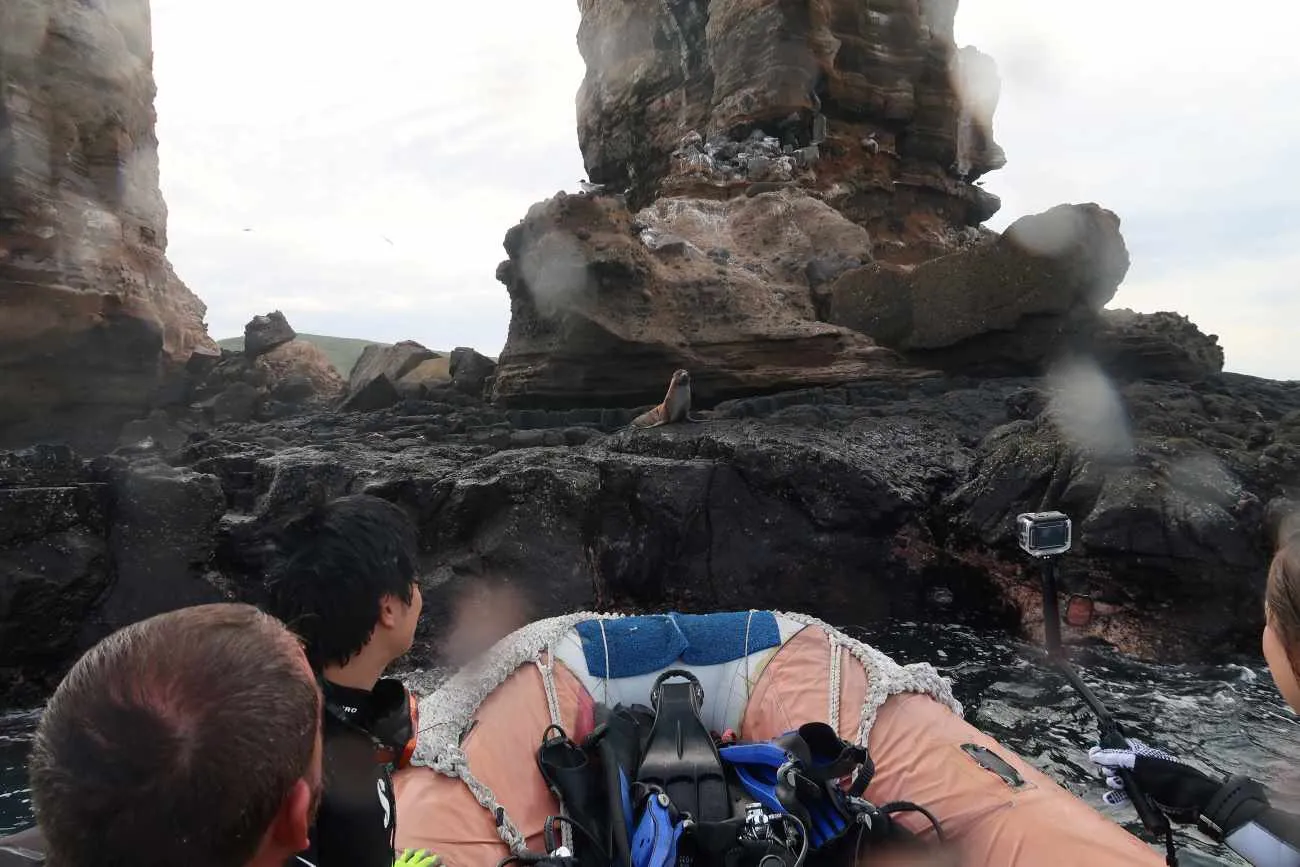
For day 4 we headed back to Wolf island, on our way back to the main islands. One of the other guests brought his drone, and took the below high altitude shot. The island itself has dramatically rising cliffs home to large bird colonies that are undisturbed by human visitors. You can see the dive boat on the bottom right with the two pangas which drove us to the precise dive spots where we got into the water, and picked us up afterwards. These were rigid inflatable boats, you had to remove your BCD in the water and have the boat crew pull it up and stack it in the boat.
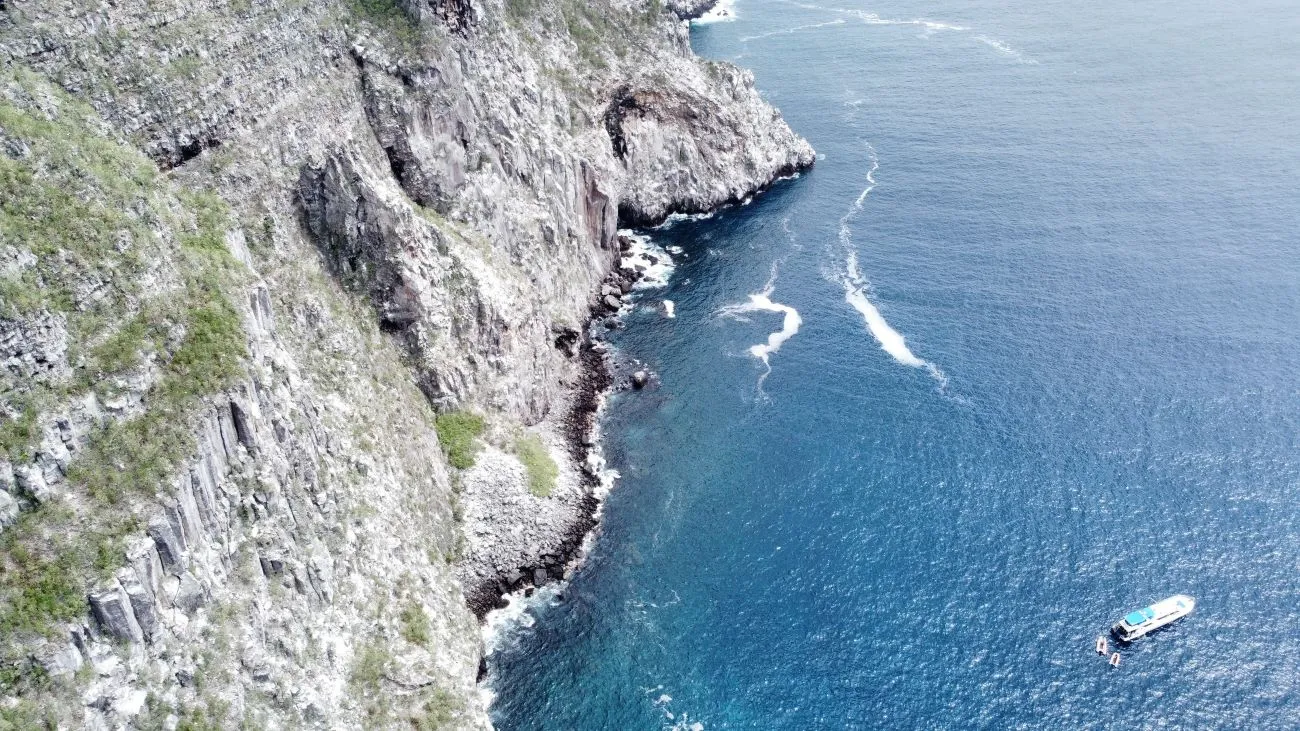
Day 5, we went down to the western side of Isla Isabella and Ferndandina, to a bay called Vicente Roca. Here is is a more secluded, sheltered bay, with colder water, as opposed to an exposed rock in the middle of the ocean such as Wolf and Darwin. It is here that we saw the diving penguins. Photos don’t do it justice, so I’ve embedded it below. You don’t usually see birds underwater!
For the last diving day, made our way back to Puerto Ayora via Roca Blanca to the north east of Isabella. The visibility is very poor and green, it resembles the cold water dives back in the UK and north east US. Theres manta rays swimming around, but I couldn’t see them, so I’ve attached a drone pic of one instead. Its better than what you’d see underwater. Its a strange environment, the sediment must contribute to the ecosystem here, and there was a group of sleeping black tip reef sharks I briefly saw in a ravine.

Overall this was a trip of a lifetime. Over my diving career, I very rarely get to see large marine fauna, especially in South East Asia, where shark fishing has decimated the local shark population. Galapagos is one of the last refuges for these sort of large marine creatures. Its heartening to know that this place exists, and to experience it is a rare privelage.
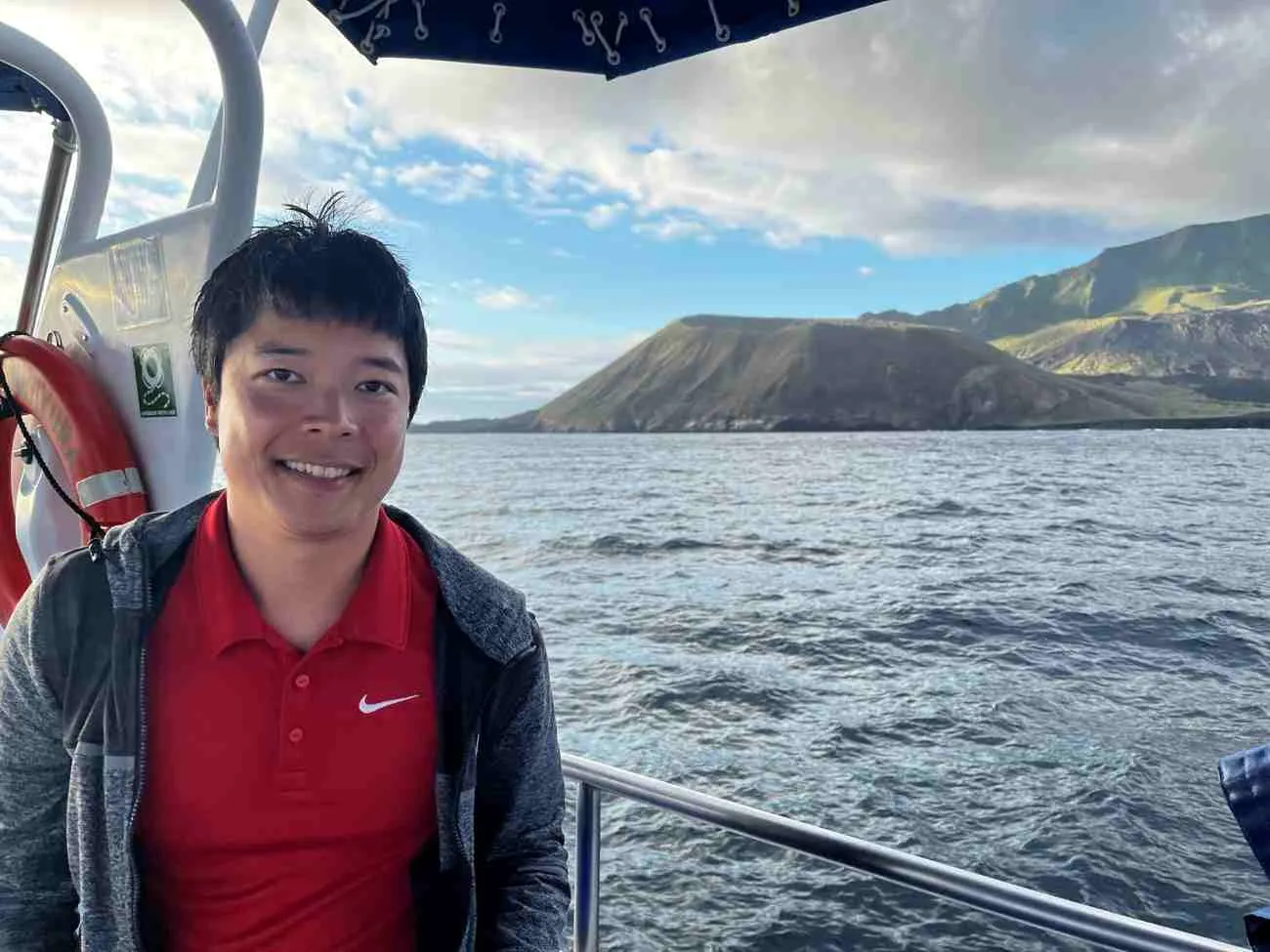
And no, you don’t need a drysuit.